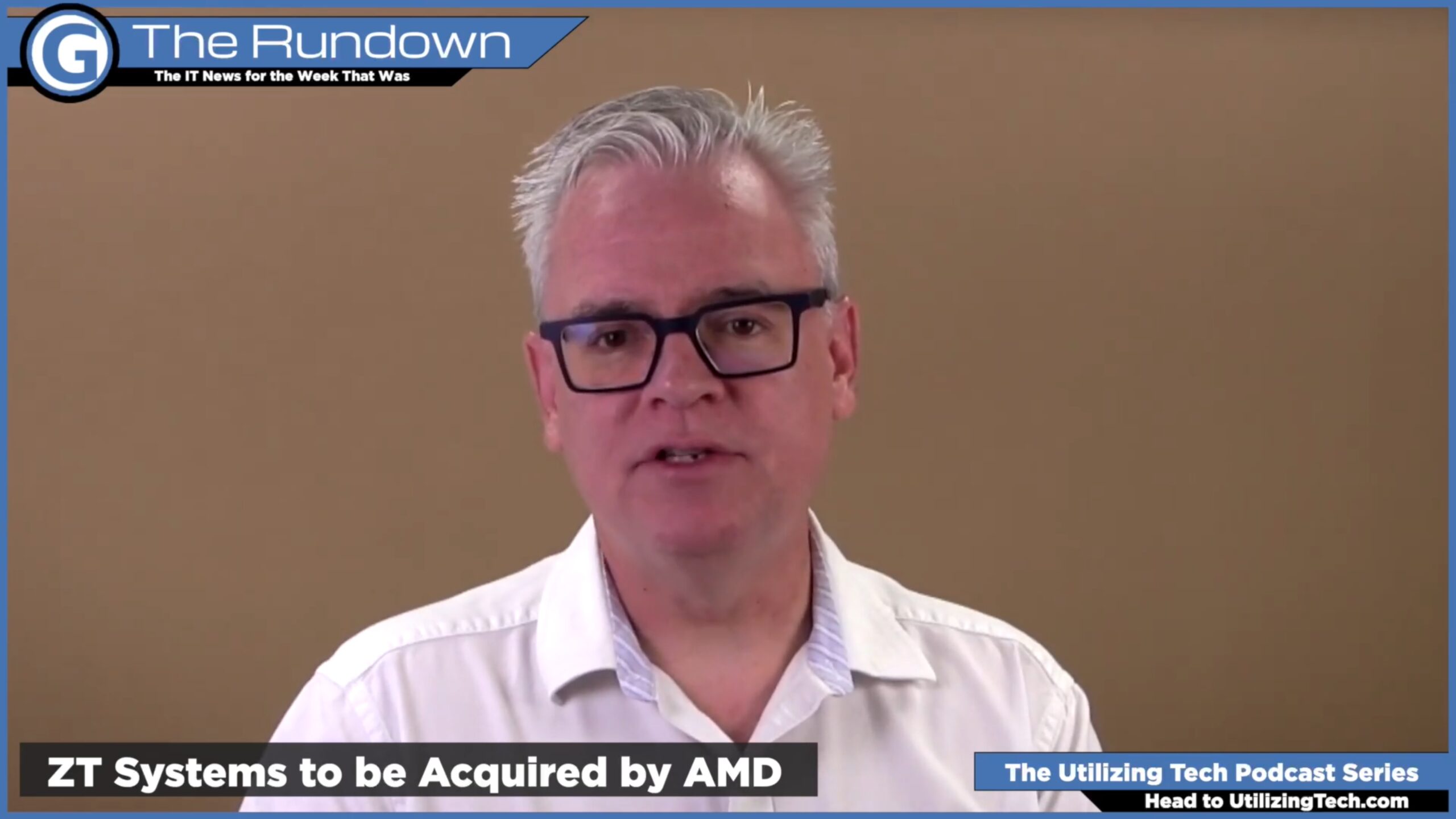AMD announced that it is planning to acquire computer hardware design company ZT Systems, for a cash-and-stock deal of $4.9 billion.
The acquisition significantly expands AMD’s footprint in AI chips and hardware space. Chief Executive Lisa Su hopes that the acquisition will bring big momentum to AMD’s long-term goal of rapidly delivering training and inferencing solutions.
Analysts are calling this a calculated move that revalidates AMD’s commitment to stay in the race and better compete with NVIDIA.
The deal that is expected to close by the first quarter of 2025 has already earned AMD stocks gains of 4.5%. But there are some speculations that the cost of the acquisition may hurt AMD’s gross margins.
President of Tech Field Day, Stephen Foskett, is optimistic and calls it a “masterstroke”. “I believe that this is a combination of strategic and opportunistic goals on the part of AMD’s management.”
Challenging NVIDIA’s Dominion
The success of NVIDIA in the AI space owes largely to the pre-integrated rack-scale systems it designs. Think of the NVIDIA DGX platform – the very best of NVIDIA’s AI portfolio in a single solution. The DGX platform is an all-in-one product that combines the trifecta of purpose-built hardware, AI software and enterprise support, basically a world-class infrastructure in a box. With it, NVIDIA hands out breakthrough performance, full-stack optimizations and direct access to DGXperts, the ultimate formula to fast-track AI deployment.
“AMD has a competitive product in the AI GPU space. Their MI250X and MI300X are really excellent products but they’ve seen modest sales success,” he observes.
The biggest headwind AMD faces is NVIDIA’s sway over the market. “The NVIDIA juggernaut is hard to derail. They have relationships, incredible software stack, and allegiance of software developers to the CUDA platform, not to mention this incredible integrated rack-scale AI concept which has really allowed it to extract maximum revenue and build maximum market share in the AI supercomputer space.”
AMD needs comparable full-stack AI solutions to keep up. “There are a couple things AMD needs to break into this market,” he explains. “One, it needs to be able to shake some people loose from the CUDA ecosystem, and the other thing it needs is a competitor for DGX.”
NVIDIA has been gathering moss and strengthening its portfolio with new allies and partnerships in the AI market for some time. “Leading up to the acquisition, there was news that Foxconn is going to be increasingly involved in NVIDIA as supply chain for their big rack-scale AI systems,” he says.
The collaboration began in 2023. In a press release, NVIDIA announced that it is collaborating with Hon Hai Technology Group (Foxconn) to build AI factories and computing infrastructures with NVIDIA GPUs.

The Next Big Leap for AMD
A similar partnership with an AI equipment maker that has command over design and engineering, and customer enablement, will give AMD the firepower it needs to develop this competing product. ZT Systems checks all the boxes.
“ZT Systems is a company that has gone unsung. It has been around a long time building servers, PCs and racks, basically the stuff we think of when we think computer servers and computer hardware,” he notes.
As a bonus, ZT Systems also enjoys excellent relationships with a broad customer base that ranges from small customers to the largest systems buyers in the market.
“The problem for ZT is that they are facing a lot of competition from Taiwan, China, and companies like Foxconn, that are out there building systems for hyperscalers and OEMs,” Stephen points out. “Foxconn and NVIDIA getting closer together in terms of building these integrated AI systems leaves ZT out in the cold.”
So an acquisition can prove strategic and most opportune for both AMD and ZT Systems. ZT’s system design and expertise around rack-scale solutions can be the perfect addition for AMD to build on its investments and flex its datacenter AI systems portfolio with complete AI solutions.
The acquisition also comes with the additional perk of getting 1000 trained engineers experienced in the work of designing rack-scale infrastructure. “[AMD] is going to have to eat some salaries for these smart people, but let’s be fair, they’re going to pay for themselves,” says co-host and team lead of the Tech Field Day event series, Tom Hollingsworth.
But AMD recognizes that ZT’s server business is of no real value to it. Su said in an interview to Wall Street Journal that AMD will only retain the systems design business while selling off the server manufacturing unit after the deal closes.
“What AMD is going to do is essentially, it will sell off the manufacturing assets that make all of ZT’s revenues,” Stephen explains. “If you look at ZT’s numbers, it’s actually pretty likely that AMD may refute some or maybe even all. They might even make a profit reselling ZT’s manufacturing capability to an OEM or ODM and there are lots of companies in the US and Europe that would benefit from having server and systems manufacturing. I think there’s going to be a long line of customers waiting to bid on that aspect of ZT.”
Tom agrees, “If they have to ingest all of this manufacturing capability that quite honestly doesn’t synergize with what they’ve got right now, why not sell it off and recoup some of that investment? It will give them a head start because what they don’t have to deal with is technical debt of a factory.”
Hear the full conversation in the Closer Look segment on last week’s Rundown. The Six Five Webcast also highlights this story. Check out Episode 228 to watch Daniel Newman and Patrick Moorehead dig into the deal and provide a breakdown of what it means for AMD.

